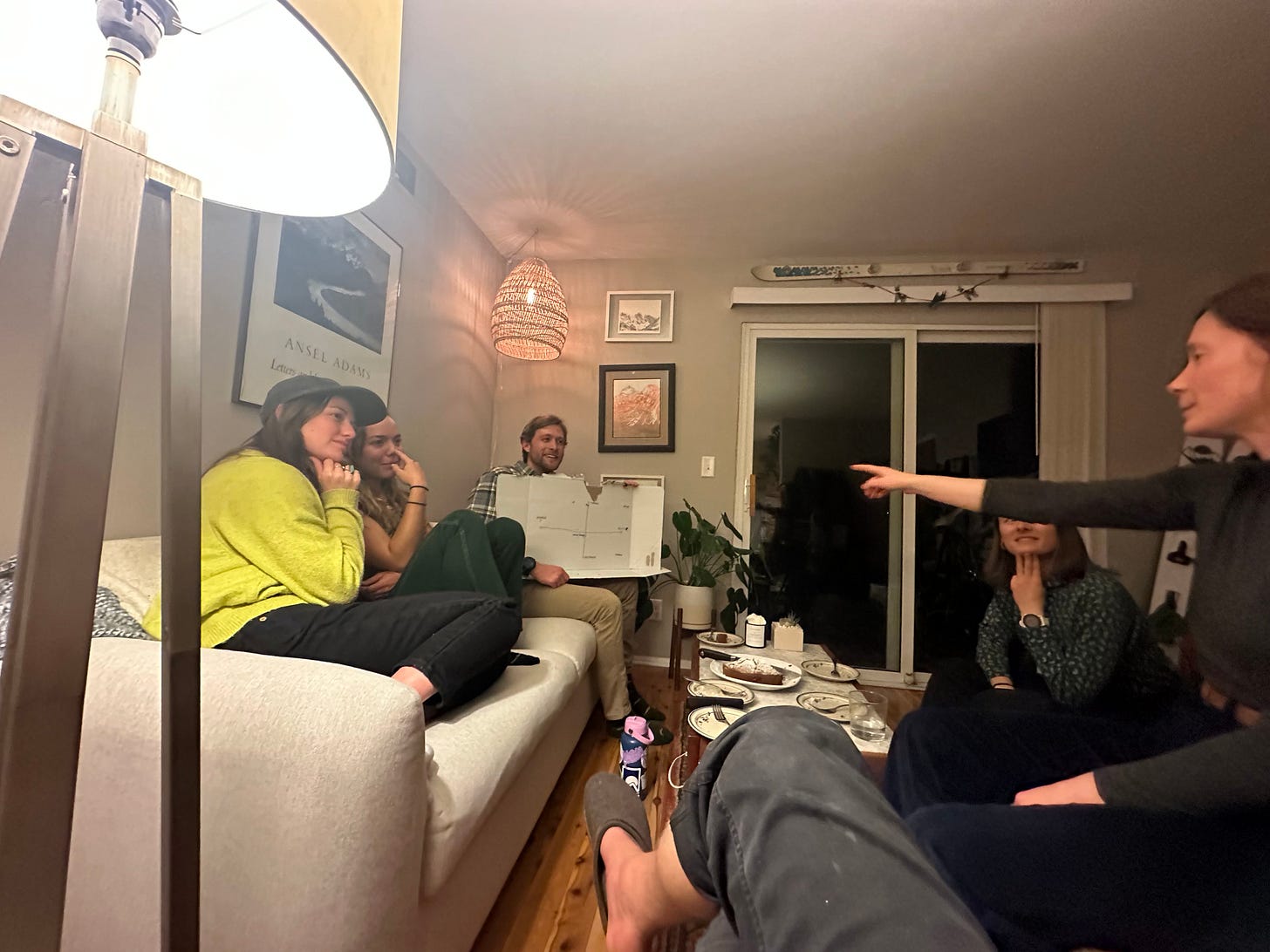The Hardo-Normie Alignment Graph
I don't know how I get invited to anything either
Recently, my friends Ian (no stranger to the blog) and Eliza hosted a wonderful potluck dinner at their apartment. The theme was “Alpine.” The attendees took that theme and ran with it: there was fondue, alpine-themed cocktails, and “Sierra’s amazing cake,” among other cuisines. Personally, I went Himalayan alpine and brought momos.
With the atmosphere appropriately set by our hosts, after dinner, as everyone refreshed their libations, I cleared my throat. With everyone’s attention, I proposed an exercise.1 (I don’t know how I get invited to anything either)
With Ian’s assistance, I took a cardboard box and tore a large chunk off to use as a canvas. Procuring a marker, I drew an x- and y-axis.
I then labelled the end of each axis: the y-axis was “hardo” and “normie”, the x-axis “humble“ and “elitist.”
The framework of the exercise in place, I turned to my skeptical, but captive, audience.
“I have drawn an alignment chart. It is now your job to fill in these four quadrants – humble hardo, hardo-elitist, humble nomie, and elitist normie – with the activities, people, and places you love and hate.” I provided a few examples to kick things off:
It was a slow start at first. But soon, suggestions were coming in so quickly that I struggled to scribble them down. Proposed placements of contentious topics like “running a 5k” spurred passionate debate (we settled on “slightly normie, humble), while others like “Patagonia jackets” (moderately normie elitist) felt like obvious placements as soon as they were on the board. In no time the board filled up with coffee shops, names of friends, breweries, hobbies, outdoor activities, cities, brands, foods, and more.
A critical point we stumbled upon almost immediately is that none of these four quadrants contained any inherent value judgements. It was not good or bad to be an elitist hardo or a humble normie: any personal reaction we had to a given quadrant was simply a reflection of our own egos.
As you could guess from my last post, though, many of my friends could be described as “extreme” relative to what might be considered normal (whatever that is), and so we as a group agreed that “humble hardo” was the aspirational quadrant, even if we didn’t always manage to achieve our place in it.
We also realized that to agree on these placements, we had to agree on what these terms meant. Though we spent an hour articulating through induction the meaning of each of the concepts by placing new ideas on the cardboard, “hardo” proved the most elusive idea to define. Sitting down now, I still struggle to encapsulate what “being a hardo” or “doing hardo things” means. What is a hardo?
Trying hard is certainly a part of it, obviously. And the effort has to be high relative to what others might consider reasonable, necessary, or enjoyable. Wrapped up in that effort is the deliberateness involved in hardo behavior. It’s generally not something that just happens; it’s a conscious choice. Something also resonates when I think about the behavior being intrinsically motivated, although perhaps that is more of a humble hardo vibe…
Honestly, though, I feel at a loss for words. Perhaps defining “hardo” is like Supreme Court Justice Potter Stewart’s infamous test for obscenity: “I know it when I see it.”
To my humble (and elitist, and normie, and hardo) readers: what does hardo mean to you?

Thanks to Rish for linking an end-of-year “organizer” in his December linkpost that inspired this exercise:









Where upon this excellent graph do you believe the average GNAR player lands?